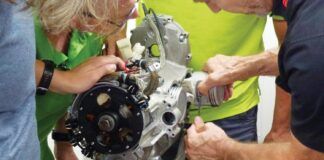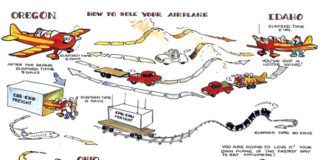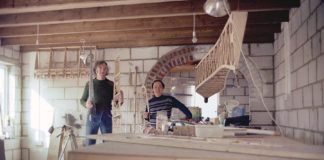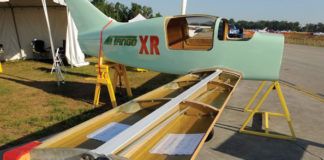One of the great benefits of designing and building your own airplane is the opportunity to build the cockpit of your dreams. Putting every switch and instrument exactly where you want it, rather than where some other designer—or happenstance—put it, is a magical thing. I must admit that cockpit design is probably my favorite part of airplane building. As a pilot, the cockpit is where I live, and if it isn’t right, then it doesn’t make much difference how the rest of the airplane turns out; it just won’t be what I want. I have made my living as a flight operations and testing guy, and helping designers understand the needs of the pilot at the stick is one of my many duties. Writing procedures to operate those (hopefully) well-placed controls is another. And those two tasks are forever intertwined, because one leads to the other, and both reflect back on the choices we all have to make.
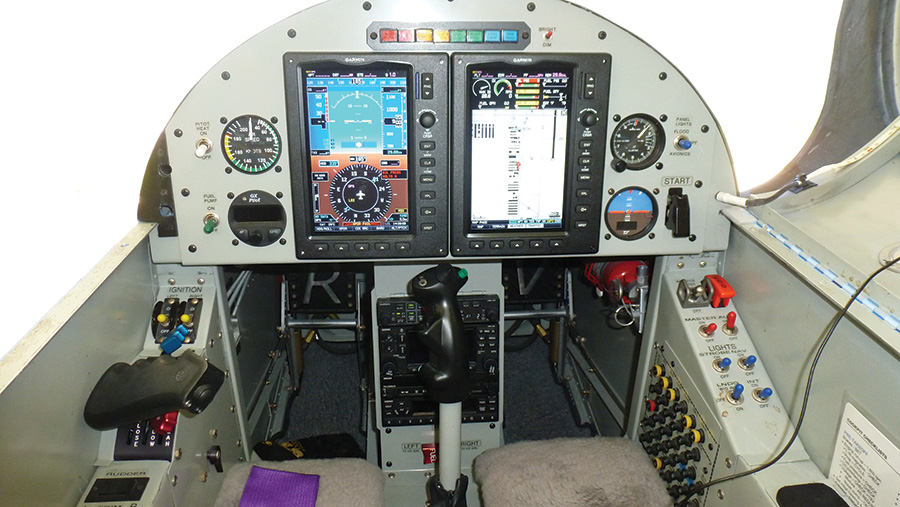
A New Kind of Checklist
While it is always a considered good practice to use a written checklist (no matter how short) in an airplane, have you ever had a craft that was so well designed that the phrase “the airplane is my checklist” seemed to apply? I know that I rarely carry a printed checklist with me on a preflight walk-around anymore. As I become familiar with a type, the items to check become my waypoints as I move around the aircraft. Circling the airplane (usually counterclockwise), I put my hand on each exposed nut and bolt, every cotter pin, and each fuel drain and cap. I shake the control surfaces when I get to them and check the attachment mounts of critical items. Touch is important: By laying on our hands, we make the airplane real, something with which we are engaged. Merely walking around and glancing at various components does not have the same concentrating effect. Following a pattern and touching as we go is a good way of guiding our bodies and minds through the process to make sure nothing has been skipped.
Cockpit Layout and Design
In a similar fashion, cockpits can (and should) be designed for a good flow; with proper layout, procedures can be written such that our hands and eyes move across or around the cockpit in a predictable fashion. Random motions from left to right and up and down are a good way to ensure that something will be missed. A checklist that moves methodically in one direction much more easily points out things that just aren’t right. How many times have you seen a pilot new to a type, or been that pilot in a new airplane, taking many minutes to get ready for engine start? Or reading a line on the checklist, finding the switch or control, looking back to the checklist for the next item, finding it somewhere on the panel, and so on. This process is tedious at best.

Write Procedures First
Far better is to think in terms of the checklist when the cockpit and controls are in the design phase. When you, the builder, are sitting in your nascent cockpit, thinking about where to put controls and displays, give a thought to how the procedures will work. In fact, write the procedures first! If you have already decided on the equipment you are going to install and the controls that will be necessary, then you probably already have enough information to write the pre-start, start, taxi, pre-takeoff, etc. procedures. You’re going to have to live with the results of this design process for many years (or sell the airplane in frustration), so take a little time up front to do it right.
Most single-engine homebuilts are pretty similar in concept, and the procedures and checklists can be as well. I like to group my procedures into little chunks. For pre-start, the first thing I do is check all the switches and circuit breakers (if you have them) to make sure that they are “off and closed.” This puts everything in a “known” configuration. Yes, you might be in the habit of leaving the beacon or strobe switch “On.” That’s OK. You just check it in the “initial configuration” as “On” instead of “Off.” The idea is to always start the rest of the procedures from the same point. After establishing the initial configuration, I generally start powering up things like the EFIS and engine monitors, then get the engine ready to start. After engine start, I power up the rest of the avionics, set lighting and frequencies, and I am ready for taxi. Those are the basic “groups.” Pre-takeoff checks are done along with the runup, and I’m ready to go. Within each of these broad categories, you will have details unique to your airplane; that’s the whole point of writing your own.
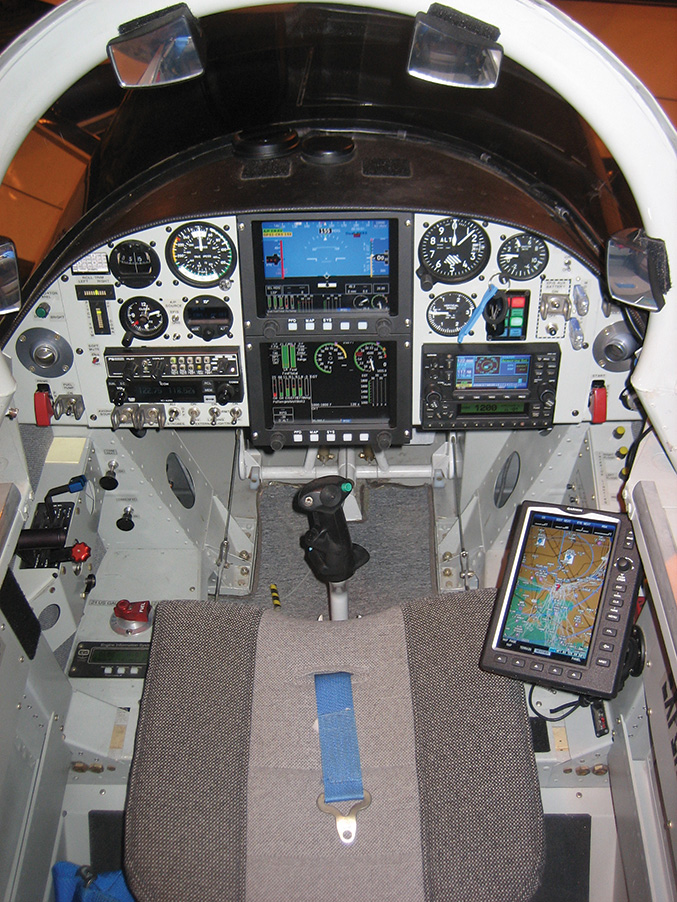
Be Particular
Write the procedures the way they make sense for your particular list of equipment. Do a few drafts; make some revisions. Use other people’s checklists as a starting point if you wish; it is an easy way to get you going. Read through your drafts, have someone else review them, get them about how you like. Only when you have these procedures typed up should you get back in the cockpit and think about where you want to put the physical manifestations of those procedures—the controls and displays that will make up your “office” in the sky.
I like to do cockpit design with pieces of sticky notes, full-sized cut-outs of avionics and little switch dots. I can move them around (it is important to have the size of the bits behind the panel as well as what you’ll see up front; things don’t always fit otherwise) to see how they fit, and how the procedures flow. Put the procedures on your kneeboard and start placing things where they belong. The first items to place, of course, are those that already have homes. Often, things like EFIS screens (or steam-gauge instruments for that matter) have to go in certain spots on the panel in order to accommodate substructure, or simply to fit at all. Engine controls will generally be somewhat fixed by the design, as will aero surface controls—the stick (or yoke), rudder pedals, flap levers (if manual), etc. Don’t think of being “stuck with” these fixed items; think of it as simplifying the rest of your choices. A “blank canvas” with no design constraints can be an unnerving place to start. In fact, some folks can’t start at all under these conditions—there are too many choices!
OK, so the “big ticket” items are fixed. Now work through your procedures and think about sweeping around the cockpit in an organized fashion. I like to start the airplane by swinging from right to left (if the throttle is on the left). My power-up switches will be on the right. I’ll have to press some buttons on the EFIS in the middle, maybe raise the flaps and turn on the fuel on my way to the throttle quadrant, then start setting engine controls before cranking.
For start, I’ll flip on the fuel pump, which will be in handy reach of the throttle, turn on the ignition and hit the starter. Think about where your hands will be during this critical time frame—one on the throttle quadrant, one on the start switch—and how will you hold the stick (if needed). Some folks go through this exercise and decide to put the start switch on the stick itself, which is one reasonable solution (though it can add a little, manageable complication). Others do some research on their aircraft type and discover that holding the stick during start is not as important as they might have thought. Still others might conclude that putting the start switch on the throttle (or in reach of it) makes the most sense. One size doesn’t fit all here; in fact, this exercise is about custom-fitting your airplane to your requirements. Listen to the ideas of others, but don’t be a slave to them.
Clean Sweep
Once I have the engine running, I will generally sweep back across the cockpit, doing systems checks and powering up avionics. When I get back to the right, I get on the controls and I am ready to taxi. As we progress through the rest of the procedures and cockpit layout, the same rules apply: Put things in the order of expected use, sweep around the cockpit…go with the flow! If your procedures and cockpit don’t match, you’ll have a mess. You’ll never get a pattern going, and you’ll forever be forgetting things. I know of a number of airplanes where it is very easy to leave the magnetos “hot” after shutting down with the mixture because the switches are simply in the “wrong place” from a flow standpoint. It is quite disconcerting to discover this mistake after moving the airplane around on the ramp by hand, believe me. I have also seen people take off with flaps extended to landing position because the switch or handle just wasn’t in the “flow.”
You can, of course, go the other way—design your procedures to “fix” a poorly laid-out cockpit. If you find your procedures have you jumping around from top to bottom, left to right and back again, then rewrite the procedures to match the airplane. Many items on our single-engine airplanes can be done in any order, so don’t live with an airplane and checklist that aren’t in harmony. If you can’t fix the airplane, fix the checklist. These aren’t certified planes; you can write the Pilot Operating Handbook any way you wish.
There is a great deal more that goes into good cockpit design than simply designing to fit the procedures that you intend to use, but this is very high on the list to make the plane work for you. (Next up would be instrument-panel symmetry, an often-overlooked element that attracts or repels onlookers more quickly than many realize.) But that is a topic for future discussions. Just remember that when you find yourself dreaming about switch and control locations, relax, take a mellow approach and consider going with the flow.










